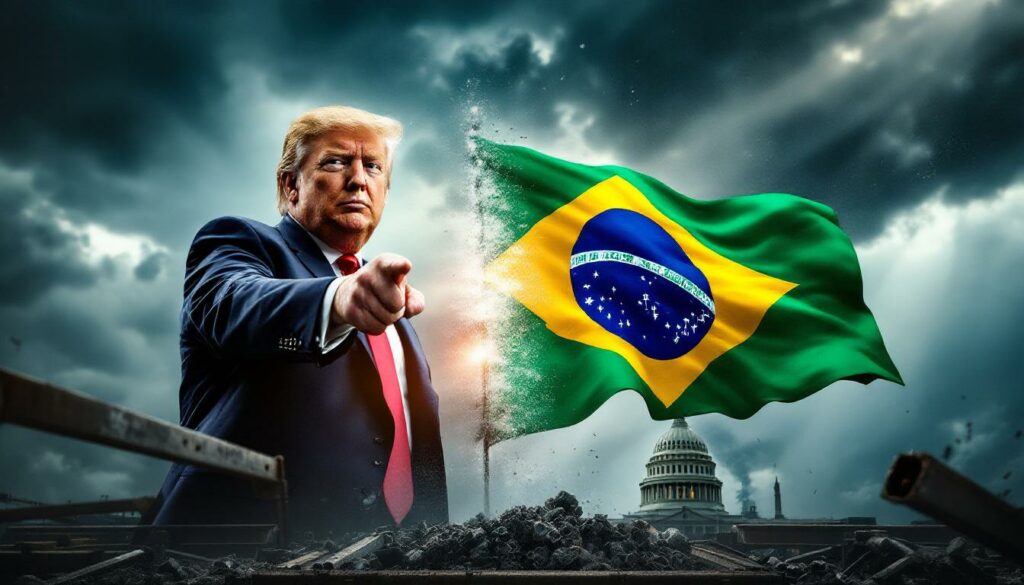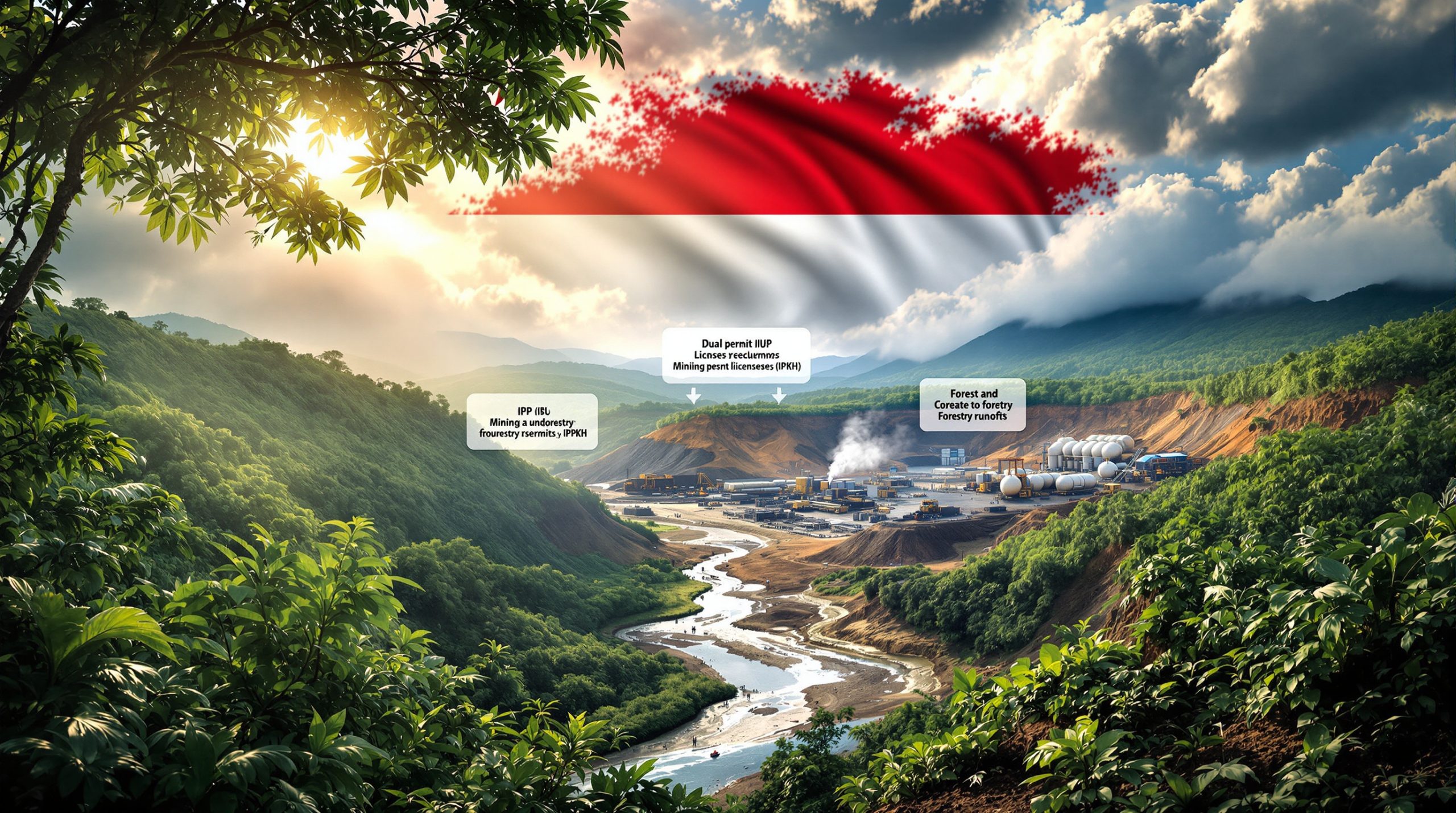Understanding US-Brazil Trade Tensions: Causes, Impacts, and Regional Responses
The economic relationship between the United States and Brazil has entered a turbulent phase following a series of tariff announcements that threaten to disrupt billions of dollars in bilateral trade. With significant implications for industries ranging from steel to automotive manufacturing, these trade tensions between US and Brazil mark a pivotal moment in hemispheric trade relations.
What Are the Current Trade Tensions Between the US and Brazil?
Recent developments have seen an unprecedented escalation in trade restrictions between the United States and Brazil, with tariff announcements that have sent shockwaves through multiple industries and regional economies.
Recent Tariff Announcements and Implementation Timeline
President Trump announced sweeping 50% tariffs on Brazilian exports on July 9, 2025, scheduled to take effect on August 1, 2025. This aggressive measure follows earlier actions from June 4, 2025, when the administration doubled steel and aluminum import tariffs from 25% to 50%.
Significant uncertainty remains about whether these Brazil-specific tariffs will be cumulative with the steel-specific duties, potentially creating compound effects that could effectively shut down certain export categories entirely.
Brazil's Ministry of Development, Industry, Trade and Services (MDIC) has indicated they are "closely monitoring developments," but noted that the formal normative acts regulating these measures remain unpublished, adding regulatory uncertainty to market volatility.
Key Sectors Affected by the Tariffs
The impact spans multiple industries, with particularly severe implications for Brazil's metal exports. In 2024, Brazil exported $5.7 billion in iron and steel products to the US market, along with $267 million in aluminum products – all now facing potentially prohibitive tariff rates.
Beyond metals, several key export categories are already experiencing significant declines:
- Machinery and equipment (showing a 23.6% decline in exports)
- Wood products (14.0% decline)
- Auto parts (5.6% decline)
- Engine components (7.6% decline)
With bilateral trade reaching $41.7 billion in the first half of 2025 (a 7.7% year-on-year increase), these tariffs threaten to reverse positive growth trends that have benefited both economies.
Why Are These Trade Tensions Escalating?
The motivations behind these unprecedented tariff actions appear to combine political calculations with economic positioning, though experts question the economic rationale given existing trade patterns.
Political Motivations Behind the Tariffs
In a notable departure from traditional trade policy justifications, the Trump administration explicitly cited a "witch hunt" against former Brazilian President Jair Bolsonaro as part of the rationale for the tariffs. This unusual political linkage introduces sovereign judicial proceedings as a factor in trade policy.
Amcham Colombia characterized the move as "a strategic use of trade as a tool of pressure" rather than traditional trade policy based on economic considerations, highlighting the geopolitical dimensions of the dispute.
White House statements have been remarkably candid about motivations. In a recent interview, President Trump stated: "I impose tariffs because I'm able to do it. Nobody else would be able to. We have tariffs in place because we want tariffs and we want money flowing into the US."
Economic Justifications and Counterarguments
Brazilian industry groups have mounted a coordinated defense, arguing that US economic claims lack factual support. The Brazilian Association of Machinery Manufacturers (ABIMAQ) emphasized that "the trade relationship is favorable to the United States, which nullifies the argument that there is an imbalance justifying the imposition of additional import tariffs."
This assertion is supported by first-half 2025 data showing a $1.7 billion surplus for the US in bilateral trade. Statistics reveal Brazilian exports to the US rose by a modest 4.4% while imports from the US climbed more robustly by 11.5% to $21.7 billion.
These figures contradict narrative suggestions of trade imbalance unfavorable to the United States, raising questions about the economic rationale behind the Trump tariffs impact.
How Are These Tariffs Impacting Brazil's Economy?
The economic consequences of these tariffs are already materializing across multiple Brazilian industries, with early data showing significant export contractions in key sectors.
Early Economic Impacts on Brazilian Exports
Amcham Brasil's Commerce Monitor data reveals that eight of the ten main Brazilian export products to the US are already showing concerning declines:
- Machinery and equipment exports down 23.6%
- Wood products exports decreased by 14.0%
- Auto parts exports reduced by 5.6%
- Engine exports fell by 7.6%
These early indicators suggest the tariff announcements are already disrupting trade flows, even before full implementation, as businesses adjust purchasing decisions in anticipation of higher costs.
Industry-Specific Concerns in Brazil
The Brazilian machinery manufacturing sector faces particularly acute challenges. ABIMAQ warns of "significant risks to employment and investments" as the US represents Brazil's top destination for machinery exports, valued at $3.54 billion in 2024.
Similarly, auto parts associations Sindipeças and Abipeças have predicted "broad damage to the Brazilian economy" should the 50% blanket tariff be implemented as announced. Their concern focuses on the integrated nature of automotive supply chains that cannot quickly reorient to alternative markets.
The steel sector faces perhaps the most severe disruption, particularly regarding steel slab exports which serve as inputs to US manufacturing. Adding complexity, Brazil imports approximately $1.4 billion worth of metallurgical coal from the US annually – a critical steelmaking input that could face retaliatory measures or supply chain disruptions.
Abrão Neto, president of Amcham Brasil, summarized the situation starkly: "We are facing a serious scenario that could make a large portion of Brazilian exports to the United States unviable, especially industrial goods, causing harm to both economies."
What Are the Regional Implications of US-Brazil Trade Tensions?
The ripple effects of US-Brazil trade tensions extend throughout Latin America, with neighboring countries assessing their vulnerability to similar measures or collateral damage through integrated supply chains.
Impact on Other Latin American Economies
Colombia faces potential spillover effects, with Amcham Colombia assessing their risk at "8 out of 10" for similar tariff threats. Their analysis identifies 237 Colombian companies in steel and aluminum sectors at particular risk if US tariffs include semi-finished products.
Mexico confronts a different challenge – scrutiny of Mexican-made steel products using imported slab from Brazil. New "melt and pour" origin rules could disqualify products with Brazilian inputs, effectively extending the impact on metal markets.
Chile, while a major copper exporter to the US, is monitoring the situation despite not being directly targeted in current announcements. Meanwhile, Peru has expressed concern about indirect impacts through global supply chains and potential price increases for vehicle imports, which constitute 9% of their total imports.
Argentina appears to be navigating a different path, reportedly negotiating exemptions for 70-80% of their exports including wine, lemons, and cotton. However, steel and aluminum would remain subject to the 50% rate, according to Argentine International Chamber of Commerce sources.
Regional Trade Dynamics and Responses
Mexico is emphasizing coordination within the US-Mexico-Canada Agreement (USMCA) framework, with Amcham Mexico president Carlos García stating that "Mexico, Canada and the US must sit down to negotiate the issues" collectively rather than bilaterally.
Chile relies on its long-standing US-Chile Free Trade Agreement for protection, which provides more structural safeguards than ad-hoc negotiations. Peru, with more limited direct exposure, is focused on monitoring indirect effects through supply chain relationships.
Maria Claudia Lacouture, president of Amcham Colombia, has called for a dual approach where "a comprehensive strategy must combine active economic diplomacy with defense against market distortions" – acknowledging both the political and economic dimensions of the current tensions.
How Are Business Organizations Responding to the Tariffs?
Industry associations and chambers of commerce have mobilized rapidly to address the tariff threats, employing coordinated diplomatic initiatives and public advocacy.
Diplomatic Initiatives from Industry Groups
American Chambers of Commerce across Latin America have issued a coordinated call for urgent negotiations, emphasizing the interconnected nature of hemispheric trade. A particularly significant joint statement between the US Chamber of Commerce and Amcham Brasil has urged high-level talks to prevent economic damage to both nations.
The Brazilian industry confederation (CNI) has taken a leading role in diplomatic resolution efforts, marshaling industry data and economic impact assessments to counter tariff justifications. Their approach emphasizes the integrated nature of US-Brazil supply chains where tariffs harm producers in both countries.
Business organizations across the region have stressed bilateral and regional diplomacy as the preferred path to mitigate economic disruptions, with particular emphasis on data-driven approaches demonstrating mutual benefits of trade.
Business Community Statements and Positions
Key business leaders have adopted firm but diplomatic positions in public statements:
Abrão Neto, president of Amcham Brasil, emphasized that "The path forward must be dialogue and mutual understanding," while offering Amcham's services to "support initiatives that favor a negotiated, pragmatic and constructive solution."
Maria Claudia Lacouture of Amcham Colombia framed the challenge in strategic terms, calling for "a comprehensive strategy [that] must combine active economic diplomacy with defense against market distortions."
Carlos García from Amcham Mexico highlighted the regional dimension, insisting that "Mexico, Canada and the US must sit down to negotiate the issues" within the USMCA framework.
Marcelo Elizondo, president of the Argentine chapter of the International Chamber of Commerce, has taken a more optimistic tone, describing negotiations as "well advanced for a reciprocal tariff reduction" that could protect the majority of bilateral trade.
What Are the Broader Implications for Global Trade?
The US-Brazil tensions represent just one element of a broader shift in trade policy that threatens established global commerce patterns and integrated supply chains.
Potential for Wider Trade Conflicts
The Brazil-specific measures sit within a larger context of Trump's reciprocal tariffs, which initially targeted over 180 countries before being paused for 90 days. The scheduled resumption of these broader tariffs on August 1, 2025, creates potential for a much wider trade war global impact.
Mexico faces particularly complex challenges with a separate 30% tariff increase proposed on top of existing 25% fentanyl-related tariffs – potentially creating a 55% effective rate on some products.
These aggressive tariff actions increase the likelihood of retaliatory measures from affected countries, potentially triggering escalating cycles of trade restrictions that could significantly constrain global commerce.
Impact on Global Supply Chains
The tariffs threaten to disrupt established steel and aluminum flows across the Americas, forcing manufacturers to reconsider sourcing strategies and production locations. Industries from automotive to construction that rely on these inputs face potential cost increases and supply uncertainties.
US consumers will likely see price increases on imported goods containing Brazilian components, from vehicles to household appliances, as manufacturers pass through higher input costs.
The uncertainty surrounding these trade tensions is already affecting investment decisions and long-term planning, with companies hesitant to commit capital amid unpredictable policy shifts. This hesitation could potentially contribute to a global market recession if the situation continues to escalate.
FAQ: US-Brazil Trade Tensions
How will the 50% tariffs affect US consumers?
The tariffs will likely increase prices for US consumers on products containing Brazilian steel, aluminum, and other affected materials. Manufacturing costs will rise, potentially leading to higher prices for finished goods from vehicles to household appliances. The joint statement from the US Chamber of Commerce and Amcham Brasil explicitly warned that these measures would "raise costs for American consumers and reduce the competitiveness of US industries."
Could Brazil implement retaliatory tariffs against US products?
While Brazil has not yet announced retaliatory measures, trade disputes typically involve reciprocal actions. Brazil could potentially target US exports like metallurgical coal ($1.4 billion annually), agricultural products, or technology to counter the economic impact of US tariffs. Brazil's need to protect domestic industries may eventually outweigh diplomatic restraint if negotiations fail to resolve the dispute.
What diplomatic solutions are being pursued?
American Chambers of Commerce across Latin America are coordinating diplomatic responses, urging high-level negotiations between governments. Industry associations are advocating for dialogue within existing trade agreement frameworks and bilateral talks to resolve the tensions. Amcham Brasil has specifically offered to "support initiatives that favor a negotiated, pragmatic and constructive solution" while emphasizing data showing mutual benefits of continued free trade.
How do these tariffs compare to previous US trade actions?
These tariffs represent a significant escalation compared to previous measures. The 50% blanket tariff on Brazilian goods is unusually high and broad in scope, targeting an entire country's exports rather than specific sectors or products. The explicit political linkage to Bolsonaro's legal situation also represents a departure from traditional trade policy justifications based on economic considerations.
What industries beyond steel and aluminum might be affected?
Beyond metals, the tariffs will impact machinery, auto parts, wood products, engines, and potentially agricultural goods. Supply chains in automotive, construction, and manufacturing sectors will face disruptions and cost increases. Even service industries supporting trade flows, such as logistics, insurance, and trade finance, may experience decreased volumes as tariffs and investment decisions adjust to the new trade environment.
Further Exploration
Readers interested in learning more about global trade tensions and tariff impacts can explore related educational content available through Fastmarkets' insights on navigating trade policies and global commodity markets. Understanding the complex interplay of political motivation and economic impact remains essential for businesses operating in today's uncertain trade environment.
Ready to Spot the Next Major Market Opportunity?
Discovery Alert's proprietary Discovery IQ model delivers instant notifications on significant ASX mineral discoveries, helping investors identify actionable opportunities before the broader market. Visit our discoveries page to see how major mineral discoveries have historically generated substantial returns, and begin your 30-day free trial today.




